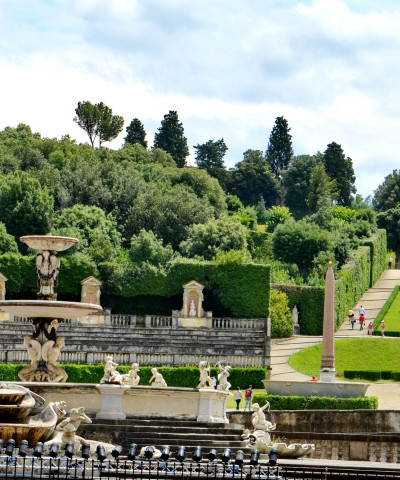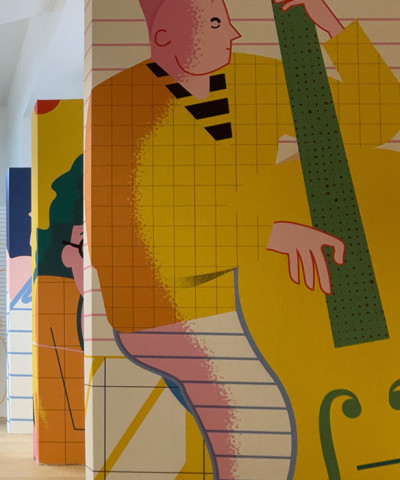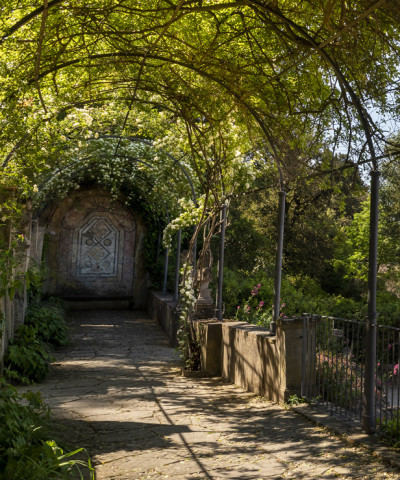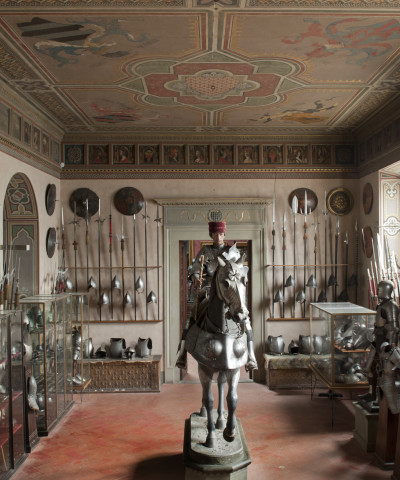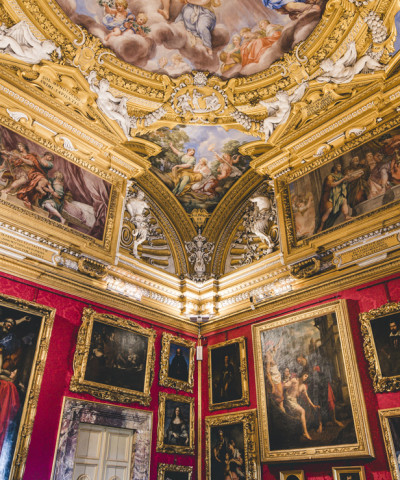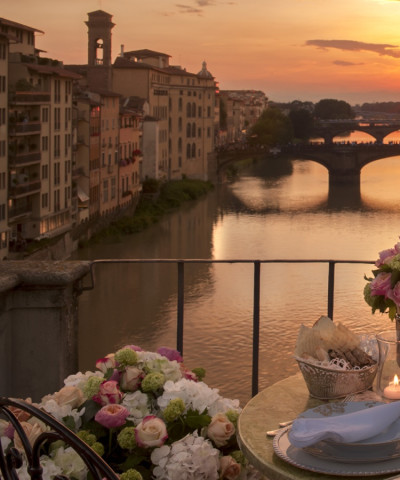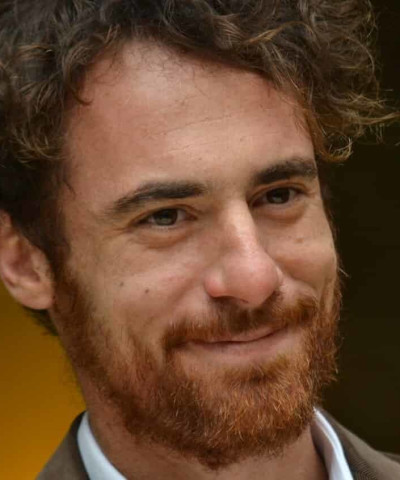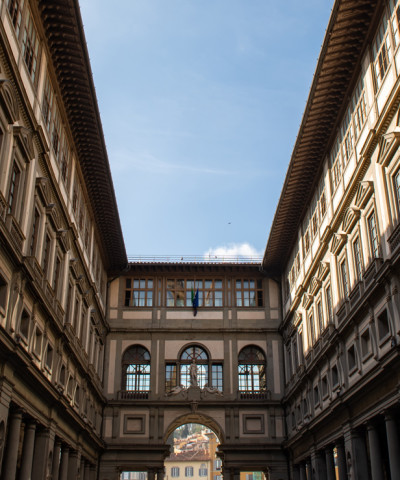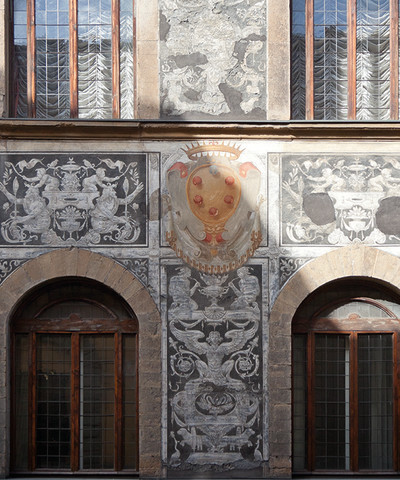The Boboli Garden
Discover with us the soul of the green lung of Florence
A visit to Boboli is a different experience in each season. In winter it is like going back in time, to the French-ruled Florence of the 1800’s, while the atmosphere in spring is that of the beginning of the century, when the sounds of old-fashioned games seem to echo in the air. Not-so-melancholy autumns, just somewhat less intensely green, form a counterpart to bright emerald summers, a vigorous dive into nature and art.
We have chosen to tell you about Boboli in summer. The occasion is the return to Italy – and Boboli – of the work of Lynn Chadwick, one of the great names of 20th century sculpture, who was also artistic mentor to Antony Gormley, whose extraordinary “Human” exhibition has invaded Fort Belvedere this summer.
This splendid open-air museum has been populated with creatures that are part human, part animal or insect that seem to hover lightly in the amphitheatre or appear unexpectedly on a lawn hidden behind a clump of bushes.
The decision to house contemporary sculptors alongside Renaissance statues is a recent one, it is linked with the desire to keep these places alive and dynamic.
This garden was developed over four centuries, from the 15th to the 20th.
It was Eleonora di Toledo, wife of Cosimo I, who in 1549 wanted the spaces to be extended and opened out. Initial plans for this transformation were drawn up by Niccolo’ Tribolo, although the works were completed, after his death in 1550 by other architects including also Giorgio Vasari along with Bartolomeo Ammannati and the brilliant Bernardo Buontalenti under the reign of Francis I. The Medici and the Lorraine families continued to enlarge the garden and enrich the collection of statues until the end of the 19th century.
Our tour of Boboli begins at the Amphitheatre, which marks the point where Boboli hill was excavated to provide the sandstone used to build Palazzo Pitti. Overlooked by the Artichoke Fountain – whose octagonal base crowned by a triumphant bronze lily was scathingly criticized by the Florentines, who dubbed it “Artichoke” – the amphitheatre is an open air embrace centred on the gigantic Egyptian obelisk that was brought from Luxor and placed here in 1789.
At the top of a slope above the amphitheatre is the Fountain of Neptune. Also at the apex of this axis, facing south-east and with the city walls marking the boundary, is the Giardino del Cavaliere, one of Boboli’s fenced gardens, and which is positioned on top of a rampart of the fortified walls built by Michelangelo in 1529 before the siege of the city the following year.
Going back down the hill in a north-easterly direction, you come to the Kaffeehaus, a little Rococo gem topped with a glazed dome. “You can enjoy the most beautiful view of Boboli from here” says Alessandra Griffo, letting it be understood that it is one of her favourite spots. From the Viottolone, the long tree-lined avenue that forms the main axis of the garden, the Kaffeehaus appears a wondrous place straight out of an enchanted garden.
Following rows of cypress trees, we find ourselves at the Isolotto, the large pond with Giambologna’s Ocean Fountain at its centre, surrounded by three sculptures representing the great rivers of the Nile, the Ganges and the Euphrates. Emerging from the water surrounding the island are the marble groups of Perseus on his faithful charger and of Andromeda, chained to the rock. The director shows us the signs of the wonderful water features that enlivened this fountain and others in the garden. Bringing these splendid pools back to life would require extensive restoration work for which the times are not yet ripe.
Going back up the hill from Porta Romana, we skirt the Prato dell Colonne (Columns Lawn) where Chadwick’s sculptures dot the grass with unsuspected grace. A statue of a peasant pouring water from a barrel, which looks less refined than the others, turns out to be more important than it seems. “It is the first statue in the garden to depict everyday life according to the custom of the time” .
The Limonia, a small jewel we find going back up from Via Romana, tells of the Medici’s love for these fruit trees. The facade consists of four bays each with four large windows plus four windows above, separated by pilaster strips. The upper façade features a cartouche with garlands and fruit, and a slightly protruding pediment. The plaster is the same Lorraine Green used for the Kaffeehaus.
The Adam and Eve Grotto in the area which previously housed the Annalena convent is a delightful prelude to the last part of the garden. Built as a small niche fronted by two columns supporting an architrave, the interior is decorated with mosaics in many coloured stones. The statues date to 1616 and are by Michelangelo Naccherino.
Our journey through the green heart of the city ends opposite the Palazzina della Meridiana. Here we find Chadwick’s most imposing sculpture – a sinuous block of metal that moves with the wind and seems to create a pole that is opposite but at the same time in complete harmony with the ancient sundial.










